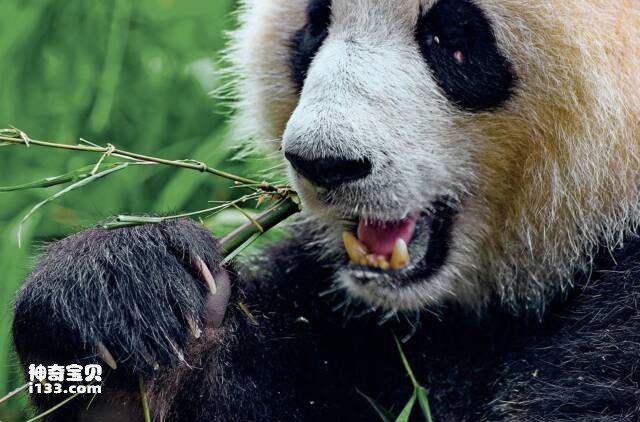Why do pandas eat bamboo? Is it inherited from ancestors or acquired? After years of investigation and analysis, the author has come to the following insights: Bamboo eating is not an ancestral tradition.
In the winter of 1993, when the author was observing the chewing function of pandas at the Beijing Zoo, a tourist asked the keeper: "Why do pandas have a special liking for bamboo?"
The breeder said cheerfully: "It is his nature to eat bamboo."
In 1975, Chinese orange bamboo and crutch bamboo growing in the Tangjiahe and Wanglang areas of Minshan, Sichuan bloomed on a large scale. The bamboos died soon after blooming. According to statistics from the staff of the reserve, more than 100 pandas starved to death among the dead bamboos because their "granaries" were destroyed. It can be seen that the bamboo forest is indeed the source of food and life for pandas.

However, if you follow the history of panda evolution to the era when their "grandfather" lived, that is, the hinterland of the Eo-Panda 8-7 million years ago, you will find that the Eo-Panda is very different from its descendants. As mentioned above, the dental structure of the primitive panda is similar to that of omnivorous bears, except that the premolars have the prototype of eating bamboo. It goes without saying that pandas are omnivores.
Let’s look at their ecological environment. First pandas live in moist swamps. They eat twigs, berries, grass roots, and insects. If there is a disaster in one place, they will flee to another place. They will never starve to death. .
The ecological environment of the descendants of the Shi panda---the Basin panda is equally superior, with mountains and rivers interdependent and dense vegetation. However, the Pasteurian panda did not inherit the omnivorous function of its ancestor the Panda, but instead became a partial and picky eater. This kind of feeding habit often cannot withstand the selection of nature. Once the bamboos bloom and die, it is equivalent to cutting off their food source, which ultimately leads to starvation and emaciation, and they are doomed.
From a microscopic perspective, the enamel structures of the teeth of the primitive panda, the small species panda, the Papilion panda, and the living panda are also different from each other.
The structure of panda teeth consists of an outer layer of enamel, also known as enamel, and an inner layer of chalk, also known as dentin. The enamel layer is composed of several glaze columns, which is hard and wear-resistant.
In 1999, Huang Wanbo, Ouyang Lian, et al., in an article titled "Analysis of Enamel Structure of Panda Teeth", discussed that the enamel columns of primitive panda teeth were thick, few in number, weakly twisted, and thick in intercolumn space. The glaze pillars of Xiaozhong panda, Babi panda and living panda are thin and numerous. The glaze pillars are highly twisted and the interstitium between the pillars is thin. The occurrence of this phenomenon is related to food habits. As mentioned above, the food eaten by primitive pandas is more miscellaneous and soft, so the tooth enamel pillars are thick and small in number, the degree of enamel twisting is weak, and the interstitium between the pillars is thick; the food eaten by Souchi pandas, Papilion pandas, and living pandas is monotonous. , mainly bamboo, with hard texture. Therefore, the tooth enamel columns are thin and numerous, the enamel is strongly twisted, and the intercolumn interstitium is thin.
To sum up, the ability of pandas to eat bamboo is neither "nature" nor passed down from ancestors, but is acquired.
animal tags:
We created this article in conjunction with AI technology, then made sure it was fact-checked and edited by a Animals Top editor.